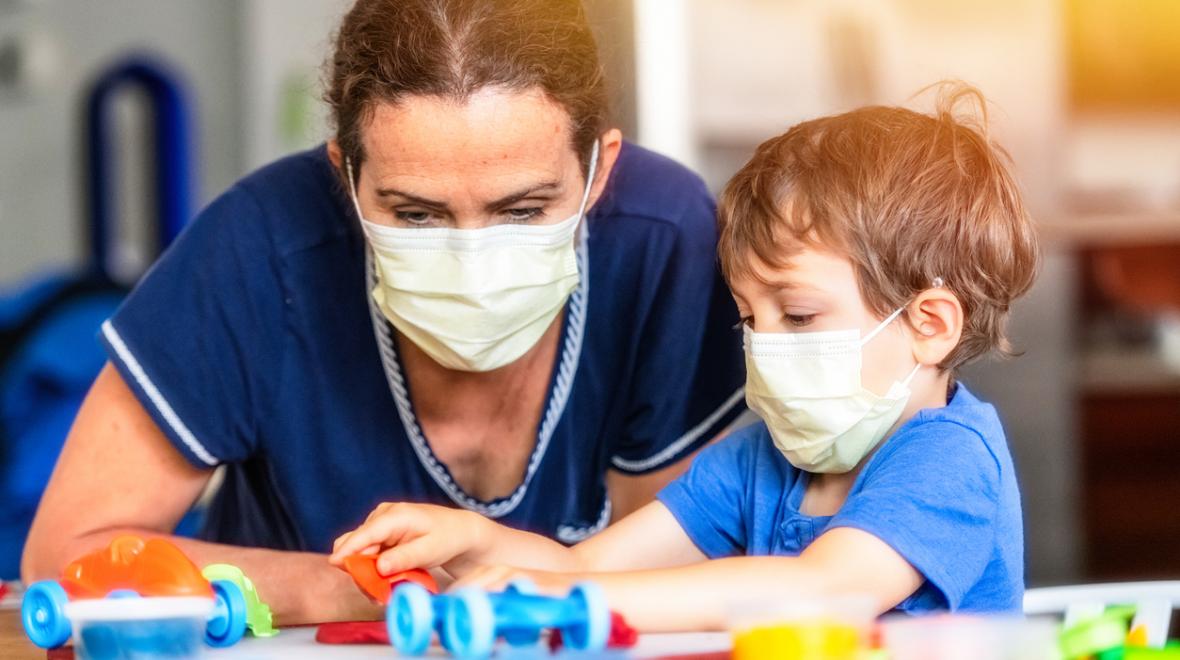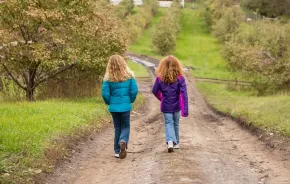
Editor's note: This article was sponsored by Bright Horizons.
The COVID-19 pandemic has utterly upended all norms of education, for kids of all ages. The lack of a consistent daily routine, engagement with peers and with caring adults other than parents, and the structure of school is hard on kids accustomed to attending a child-care environment. Forced by necessity to become their child’s on-call playmate, teacher and substitute best friend, working parents are also feeling stressed and beyond challenged by the pandemic.
As opportunities to return to child care open up, these same parents are left to struggle with what may feel like an agonizing decision with no easy answer: They must weigh the benefits of resuming the comforting and engaging routine of time with peers and teachers against very reasonable concerns of exposing their child and family to the coronavirus.
The necessary protocols that care providers are instituting to ensure the safety of their young charges give rise to other concerns and questions for parents. How will my child adjust to a new child-care setting, with teachers in masks? How will their feelings of sadness or separation anxiety be supported? How can I best cope with my own feelings of anxiety and worry, so as not to make this transition harder on my child?
Change is difficult for all of us, even in “normal” times. The uncertainties and fears attending the pandemic only serve to ratchet up the stakes, but creating a consistent routine — at the child-care center and at home — will go a long way in helping children to feel safe and secure in this time of great disruption.
We reached out to local early education experts for tips and practical strategies for easing the stress of back-to-child-care routines:
Prioritize sleep
The pandemic has turned time into Jell-O for families, and that has translated for many into impacts on the quality, quantity and consistency of sleep. To avoid the issues that result when kids are overtired, be sure to normalize your child’s sleep schedule beginning three to five days prior to their first day back on their new child-care schedule, advises Rachel Robertson, vice president of education and development for Bright Horizons. “This is great advice for kids — and adults — of any age returning to a school/work schedule.”
Set and stick to a daily schedule
In this day and age of family organization apps and digital time management solutions, it may surprise you to discover that maintaining a kid-friendly, physically tangible daily schedule will help your entire household adapt to the new routine. It is also a great tool for encouraging a sense of responsibility and developing other executive function skills in young children, including learning what a schedule is and how to manage it, tracking self-directed tasks on time and planning ahead.
“Make it visual and accessible — take or draw pictures of your child brushing their teeth, getting dressed, eating breakfast and putting on their shoes, and then attach them to the schedule. Hang it in a central location in your home at your child’s eye level. You can also have them mark each task or activity as they complete it,” says Robertson.
Routines aren’t just for little people
Don’t neglect your morning routine, moms and dads! Take account of all you need to do to get your day started and reflect on how to get it all done in the least stressful manner possible. That might mean adjusting the times you go to bed and wake up in the morning in order to help you get enough sleep (see above) and start your days feeling calm and unflustered.
Help set expectations
To lessen the potential for your child’s anxiety when you drop them off at the child-care center and during the first few days or weeks back, talk to your child ahead of time to explain what they can expect to happen when they return to child care. This conversation should include a few key elements:
Prepare for temperature checks. Many child-care centers are requiring temperature checks when children are dropped off. Practice taking your child’s temperature and then have them take your temperature.
Prevent unnecessary tears during drop-offs and avoid sneaking away. Collaborate with your child on a special and consistent drop-off ritual that will make them feel safe. Arrive at the center early enough to allow time so you do not have to rush through your ritual.
Licensed social worker and parent coach Sarina Behar Natkin is a big fan of the separation ritual. “Whether it’s 10 hugs and kisses or a high five, once your ritual is complete, calmly leave, trusting that your child is in the care of amazing, experienced teachers who are extremely skilled at helping kids adjust to their new environment.” She also suggests reading the book “The Kissing Hand” by Audrey Penn, which will give you some great ideas for developing your own soothing separation ritual.
Keep your own emotions in check. Yes, our stomachs seem perpetually lodged in our throats right now, but it is very important not to taint the drop-off by expressing any of your own worries. Children often pick up on our stress, and this can make the adjustment harder for them.
“Your parenting cues should be ‘confident and loving’ when it comes to the quality of goodbye your child needs to help them feel safe and to know that you believe they will be okay,” says Robertson. Find support for yourself — from your partner, a friend or fellow parent — or a favorite distraction so you can be fully present for your child’s emotions.
Speaking of masking fears... Despite the ubiquity of face masks in our day-to-day interactions, your child might feel frightened by child-care staff wearing masks. Help them understand why teachers — and other community helpers and workers — are wearing masks, as well as taking other precautions, such as washing their hands, checking temperatures, and covering coughs and sneezes. “One thing we have found that helps is having parents practice covering their face to demonstrate to their child that it doesn’t change you,” says Robertson.
Play “pretend” and tell stories. If your child is expressing worry about going to child care or being apart from you, try a role-playing game of “work” or “child care” at home, using dolls and stuffed animals as trusty stand-ins for any missing characters.
Another great way to soothe those first-day-back jitters? Read a timely book about child care or school that will help your child process any big emotions they are feeling. (From the aforementioned “The Kissing Hand” to the gentle rhythmic flow of “Llama Llama Misses Mama” by Anna Dewdney, you’ll find great book recommendations for helping children process those first-day jitters.)
Offer comfort — to them and to yourself
Whether your child adjusts with ease or struggles early on, making the transition into this new phase is a significant event in their life. Your job is to calmly and patiently reassure them that you will get through this transition together.
“While it’s hard to see your child struggle, giving him and yourself time to adjust is essential. It may be bumpy at first, but your ability to stay calm and model persistence will go a long way toward helping your child do the same,” says Behar Natkin.
These rites of passage and transitions can be difficult, and likely will be made more so with the additional stress and uncertainties of the pandemic and the general unrest in our lives. But whatever the emotions, remember that professional caregivers are experienced in soothing fears and helping children and parents alike adjust to a new child-care routine.
“From our experience of reopening our centers, we can assure you that children and teachers are thriving — we are here to help parents through this process,” says Robertson.
|
Sponsored by: |
 |











